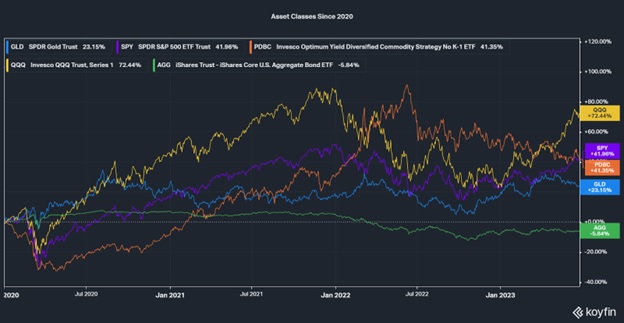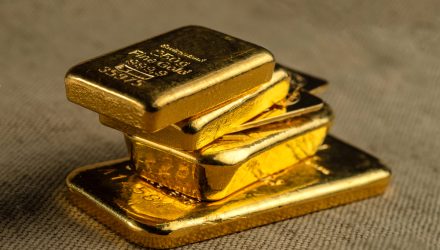Investors who already have allocation to gold in their portfolios are planning to increase their allocations to the metal through 2023, according to a survey released recently by State Street Global Advisors.
The study includes more than 1,000 investors with at least $250,000 in investable assets. It showed a fifth of those own some type of gold exposure at an average of 14% of their portfolio. Just under half of those investors have gold exposure through ETFs. And a slight majority maintain exposure through physically holding the metal or owning gold mining stocks.
Notably, 17% of Millennials surveyed had gold in their portfolios compared to 10% of Generation X and Baby Boomer respondents. This suggests the advent of ETFs made it easier to get gold exposure.
“I think that there were a number of people in my Boomer generation who were perhaps a little slow to adopt the ETF trends,” said George Milling-Stanley, Chief Gold Strategist at State Street Global Advisors. “The millennials were probably the ones who adopted it with the most enthusiasm.”
Nearly seven in 10 investors in the survey said they hold gold as a hedge against inflation and economic downturns. Approximately 57% of those using gold ETFs say they plan to put more money in the asset class in the next six to 12 months. That compares with 40% who plan to keep their investment as is. Another 3% say they are likely to divest.
Gold’s Recent Past, Potential Future
Flows into gold ETFs are net positive this year. Investors added a net $1.71 billion in assets to physical gold ETFs with more than $500 million in assets, according to VettaFi data.
However, gold has failed to consistently outperform other asset classes in the post-COVID lockdown era. That’s largely due to the cascade of economic headwinds that resulted. In 2020, the SPDR Gold Trust (GLD) returned 24% and outperformed the S&P 500’s return of 17% after its spring crash, but was beaten by a 46% return in the Invesco QQQ Trust (QQQ). It would lag equities during 2021’s post-pandemic exuberance.

Gold also failed to rise with spiking inflation compared to broad commodities. GLD fell by less than 1% in 2022, compared to a 19% gain in the Invesco Optimum Yield Diversified Commodity Strategy No K-1 ETF (PDBC).
The Case for Gold
However, gold’s returns were stable compared to bear market-level losses in the S&P 500 and the tech sector last year. Milling-Stanley said that’s exactly what gold was meant to do in a world where rates were rising, inflation was spiking and war erupted in Ukraine.
“When everything else is – forgive the technical term here – going to hell in a handbasket, gold doing nothing, I think, was a relatively stellar performance,” he said.
GLD had a better return than the S&P 500 earlier this spring, as investors fretted over the collapse of Silicon Valley Bank and other institutions which weren’t hedged for rate hikes. However, it has produced a return of just 4.5% compared with 15% for the SPDR S&P 500 ETF Trust (SPY) year-to-date.
Historical trends show gold tends to shine when inflation remains above 5% for two straight years, Milling-Stanley said. He said core CPI and personal expenditures remain elevated compared to headline inflation figures. That keeps the door open to future rate hikes from the Federal Reserve. It also means more risk of a recession down the line despite enduring consumer optimism.
“There’s a disconnect here between the market’s perception and what I think of as the underlying economic realities. And disconnects have a habit of unwinding themselves and taking people by surprise,” Milling-Stanley added.
For more news, information, and analysis, visit the Commodities Channel.

